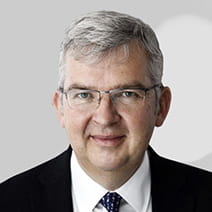As the weather heated up over the summer so did equity markets. This led to turbulence at different points in July, August and September as volatility reached levels rarely seen over the past couple of decades. This came as the dominance of a handful of mega caps in the US reached extreme levels and some investors became nervous about the economic outlook, notably a perceived slow down in the US based on few data points. Does this mark a pivotal moment for investment markets?
First, it is important to remember that there is the economic story and then there is the investment story. Let’s start with the economy. Higher inflation has not proved to be transitory although it has now come down after central banks ratcheted up interest rates. While it is probable that interest rates have peaked, they are unlikely to be reduced to the 0% to 2% level that we had seen for the 10 to 15 years up to 2022. We believe interest rates are more likely to settle in the 3.5% to 4.0% range in the US, for example.
This economic story will have some key impacts on investment markets and therefore how to manage portfolios. To start with, this means the cost of capital will be a lot higher than it was before and one effect of this is that there is likely to be a rotation in equity markets between companies, sectors and geographical markets. There will need to be greater diversification in portfolios across asset classes, within asset classes and investment styles.
Over the last 10 to 15 years, portfolios have been able to deliver while being concentrated on US dollars, comprising primarily equities plus some Treasuries, with the proportion between the two based on clients’ risk profile. If you went back 15 years and proposed this approach, it would appear mistaken by putting all your eggs in one basket. And yet it would have been very successful.
The market environment is changing, however. The superior earnings that have been delivered by US mega and large caps are now being seen beyond these stocks, not only in the US but also in international markets. Analysts are predicting that by the end of this year and the start of 2025, the earnings will be similar across cap sizes, and there will be cheaper valuations available outside the large caps. Who would not want growth of a similar magnitude to some of the Magnificent 7 stocks at cheaper prices? We believe we will gradually start to see this rotation happen.
The beginning of August was a fire drill in terms of what will happen when we see weaker returns from US large caps and how diversification can benefit client portfolios. This included the performance of equities outside the US and the fact that bonds worked as diversifiers to equities. This supports our view that the death of the 60/40 portfolio has been greatly exaggerated.
If, as we suggest, the concentration in equity markets of the mega caps in the US lessens over time, it is important to consider what the relative impact will be on active managers and passive vehicles within portfolios. If you take the US, which is the biggest passive market, the top 10 holdings in the S&P index represent 35% of the whole index. For the last time we saw this concentration in the S&P500, according to one of our US fund managers, you have to go back to the Great Depression. The market conditions back then were entirely different to what we have today and we do not believe all the growth comes from just seven stocks.
The S&P 500 is a market cap weighted index, which is how most investors buy it through passive vehicles. By number, the 500 stocks in the index mainly comprise consumer and financial companies, representing the US economy. It is also possible to take an equally weighted exposure to the S&P500 through a passive vehicle. But over the past five years, the market cap weighted has outperformed the equally weighted by some 40%, which is quite extraordinary. What we have seen is that smaller sectors, like technology, have become a much larger exposure on an equally weighted basis.
This is where your risk is through passive vehicles. While passive has certainly helped us over the years in terms of a broader universe of options to use within portfolios, there is a big opportunity now for active management particularly in mid and small caps.
Going back to the start of this article, we will have both an economic and an investment story in the future. The recent investment story has been about AI, which is undoubtedly going to change the world in the same way that the Internet, railways and the light bulb. AI will be transformational through productivity gains and therefore economic growth. But as a pure investment story, AI has to some extent already played out and is the new economic story.
The next investment story is the rotation of equity markets from the US to other parts of the world. This is where to look for diversification going forward.
What does this mean for the positioning of the Liontrust Multi-Asset funds and portfolios? Actually very little because we are happy with the diversification we have already. Let’s go back to the start of August to explain why. The volatility index (VIX) – which is the index of fear and greed – passed 65 on the way up in early August. The significance of this is shown by the fact that the last times the index was as high as 65 was during Covid and the Global Financial Crisis (GFC).
It is easy to understand why volatility was so high during the GFC and Covid as we did not really know what the economy was going to do the next day. However, at the beginning of August 2024, we could not see how the economic environment had changed very much. We knew the US economy was slowing down. We knew at some point the yen was going to weaken and the Bank of Japan was going to put up interest rates. And yet when the central bank did by 25 basis points, what an impact this had on markets! The market movements and volatility were purely sentiment driven.
We believe what you have to do in investment is to focus on the signal, which are the fundamentals of markets and stocks. This summer there have been no changes in the fundamentals. If there is no change in the fundamentals, then stick with your portfolio and let compounding do the work.
To find out more about the Liontrust Multi-Asset portfolios, funds and service, visit here.
KEY RISKS
Past performance is not a guide to future performance. The value of an investment and the income generated from it can fall as well as rise and is not guaranteed. You may get back less than you originally invested.
The issue of units/shares in Liontrust Funds may be subject to an initial charge, which will have an impact on the realisable value of the investment, particularly in the short term. Investments should always be considered as long term.
The Funds and Model Portfolios managed by the Multi-Asset Team may be exposed to the following risks: Credit Risk: There is a risk that an investment will fail to make required payments and this may reduce the income paid to the fund, or its capital value. The creditworthiness of a bond issuer may also affect that bond's value. Bonds that produce a higher level of income usually also carry greater risk as such bond issuers may have difficulty in paying their debts. The value of a bond would be significantly affected if the issuer either refused to pay or was unable to pay; Counterparty Risk: The insolvency of any institutions providing services such as safekeeping of assets or acting as counterparty to derivatives or other instruments, may expose the Fund to financial loss; Liquidity Risk: If underlying funds suspend or defer the payment of redemption proceeds, the Fund's ability to meet redemption requests may also be affected; Interest Rate Risk: Fluctuations in interest rates may affect the value of the Fund and your investment. Bonds are affected by changes in interest rates and their value and the income they generate can rise or fall as a result; Derivatives Risk: Some of the underlying funds may invest in derivatives, which can, in some circumstances, create wider fluctuations in their prices over time; Emerging Markets: The Fund may invest in less economically developed markets (emerging markets) which can involve greater risks than well developed economies; Currency Risk: The Fund invests in overseas markets and the value of the Fund may fall or rise as a result of changes in exchange rates. Index Tracking Risk: The performance of any passive funds used may not exactly track that of their Indices. Any performance shown in respect of the Model Portfolios are periodically restructured and/or rebalanced. Actual returns may vary from the model returns.
The risks detailed above are reflective of the full range of Funds managed by the Multi-Asset Team and not all of the risks listed are applicable to each individual Fund. For the risks associated with an individual Fund, please refer to its Key Investor Information Document (KIID)/PRIIP KID.
DISCLAIMER
This is a marketing communication. Before making an investment, you should read the relevant Prospectus and the Key Investor Information Document (KIID), which provide full product details including investment charges and risks. These documents can be obtained, free of charge, from www.liontrust.co.uk or direct from Liontrust. Always research your own investments. If you are not a professional investor please consult a regulated financial adviser regarding the suitability of such an investment for you and your personal circumstances.
This should not be construed as advice for investment in any product or security mentioned, an offer to buy or sell units/shares of Funds mentioned, or a solicitation to purchase securities in any company or investment product. Examples of stocks are provided for general information only to demonstrate our investment philosophy. The investment being promoted is for units in a fund, not directly in the underlying assets. It contains information and analysis that is believed to be accurate at the time of publication, but is subject to change without notice. Whilst care has been taken in compiling the content of this document, no representation or warranty, express or implied, is made by Liontrust as to its accuracy or completeness, including for external sources (which may have been used) which have not been verified. It should not be copied, forwarded, reproduced, divulged or otherwise distributed in any form whether by way of fax, email, oral or otherwise, in whole or in part without the express and prior written consent of Liontrust.










